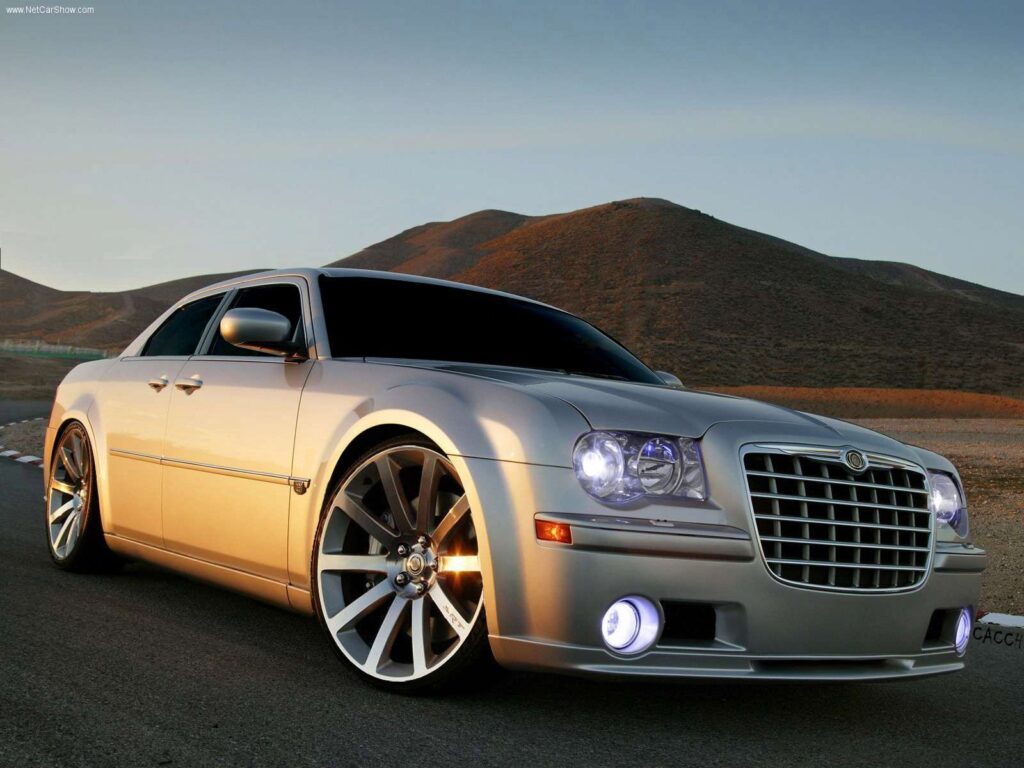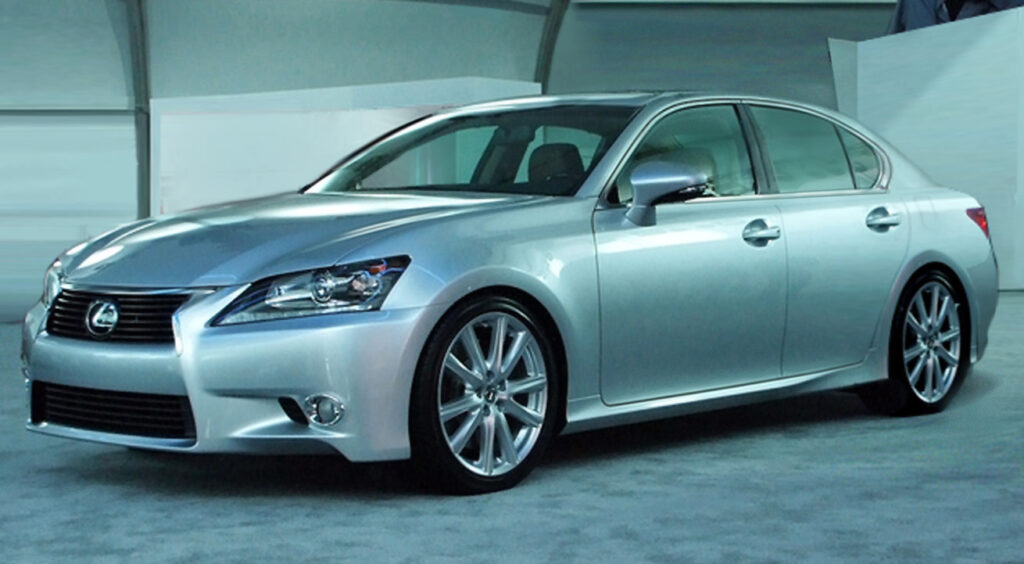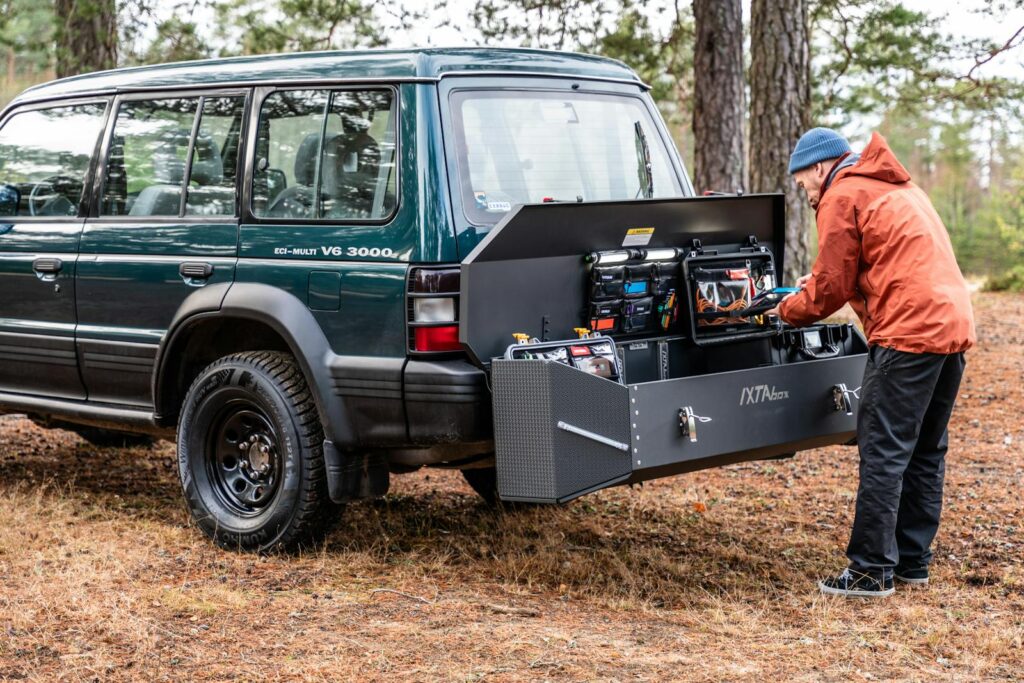
The automotive market is a complex ecosystem, constantly influenced by economic shifts, technological advancements, and evolving consumer preferences. For many, a new vehicle purchase represents a significant investment, often second only to a home. Yet, a crucial aspect of this investment—often overlooked until it’s too late—is depreciation, the silent assailant that erodes a vehicle’s value from the moment it leaves the dealership lot. Understanding this financial reality is paramount for any savvy investor or car buyer seeking to mitigate long-term costs.
Recent analyses reveal a critical trend: depreciation rates are on the rise across the board in 2025, surpassing figures from 2023 and returning closer to pre-pandemic levels. This shifting landscape means that vehicles are losing more of their initial value over a five-year period, presenting both challenges and opportunities for those monitoring the market. As used car prices have retreated from their pandemic-era peaks, the supply chain for both new and used vehicles gradually normalizes, exerting downward pressure on resale values. This normalization directly impacts the resale value of existing vehicles, making current market conditions particularly sensitive for investors.
Compounding this broader trend is the pronounced variation in value retention among different vehicle types, a factor that holds significant weight for financial planning. While certain segments, such as trucks and hybrids, demonstrate impressive resilience in holding onto their worth, other categories, notably some sedans, are proving to be substantial financial liabilities. This detailed examination will spotlight specific sedan models and broader categories that are currently exhibiting the worst depreciation, providing critical insights drawn from robust market data.
This in-depth article, drawing exclusively from the comprehensive iSeeCars study that analyzed over 800,000 five-year-old used cars sold between March 2024 and February 2025, will meticulously break down the factors contributing to rapid value loss in specific sedan types and models. Our aim is to arm you with the knowledge needed to make more informed investment decisions in today’s volatile market, focusing on the vehicles that analysts and resale charts reveal as the least favorable for long-term value.

1. **Electric Vehicles: The Steepest Depreciation Curve**Electric vehicles (EVs) have been heralded as the future of automotive transport, offering environmental benefits and cutting-edge technology. However, when it comes to long-term financial performance, particularly in terms of resale value, the data presents a sobering reality. According to the iSeeCars analysis, electric vehicles lead all segments in depreciation, shedding a remarkable 58.8% of their value after just five years of ownership. This figure stands in stark contrast to the industry average of 45.6% for all vehicles in 2025, making EVs the segment with the most pronounced value erosion.
This significant depreciation rate for electric vehicles carries substantial implications for potential investors and current owners. A near 60% loss of value within half a decade translates into tens of thousands of dollars in lost equity, a financial consideration that cannot be understated. For someone purchasing a new EV today, they must factor in this considerable depreciation as a core component of their total cost of ownership, far beyond the initial sticker price and running costs. This phenomenon impacts the overall return on investment, making a seemingly eco-friendly choice a potentially costly one in the long run.
Many of the most prominent electric vehicles on the market today, including several widely recognized models, are sedans. This convergence means that consumers seeking the environmental benefits and technological allure of an EV sedan are also inadvertently stepping into a category prone to the steepest depreciation. The rapid advancements in battery technology, range, and charging infrastructure may contribute to this trend, as newer models quickly render older generations less desirable and, consequently, less valuable in the used car market. The pace of innovation in this sector is a double-edged sword, exciting for progress but challenging for asset retention.
The data from the iSeeCars study further emphasizes the volatility of the EV market regarding value retention. Comparing current figures to previous years, EV depreciation jumped from 49.1% in 2023 to 58.8% in 2025. This acceleration in value loss highlights a concerning trend for electric vehicle investors. For those eyeing the automotive sector, this trend signals a need for caution. While the initial appeal of electric vehicle adoption remains strong, the financial reality of rapid depreciation demands a strategic approach to purchasing and selling. Understanding that an EV sedan, despite its technological prowess, may become a financial burden faster than other vehicle types is crucial for optimizing long-term portfolio performance and avoiding unexpected capital losses.

2. **Luxury Sedans: A Premium Price, a Rapid Drop in Value**The allure of a luxury sedan is undeniable, promising superior comfort, advanced features, and often, a powerful statement of personal achievement. Yet, beneath the polished chrome and sumptuous leather interiors lies another significant financial challenge for investors: consistently high depreciation. The iSeeCars study explicitly highlights that “Electric vehicles and luxury models… make up 23 of the 25 cars that lose the most value.” This finding underscores a pervasive issue within the high-end sedan market, where initial premium prices often fail to translate into sustained resale value.
The very characteristics that define a luxury sedan—exclusive features, sophisticated technology, and brand prestige—can paradoxically contribute to its rapid depreciation. As new models introduce even more advanced iterations, previous generations quickly lose their cutting-edge appeal, becoming less competitive against newer offerings. Furthermore, the specialized maintenance, complex repair costs, and higher insurance premiums associated with luxury vehicles can deter second-hand buyers. These factors collectively create a distinct disadvantage for these once-coveted models in the used car market, influencing their long-term financial viability.
For those investing in new luxury sedans, the financial impact of this depreciation is magnified by the higher initial purchase price. While a mainstream vehicle might lose a similar *percentage* of its value, the *absolute monetary loss* for a luxury sedan, which can start well into the five or even six figures, is substantially greater. This means that an investor could potentially see tens of thousands of dollars—or more—evaporate from their asset’s value within a few short years, simply due to the nature of the luxury market and its demanding consumer base. This makes careful consideration of the true cost of ownership even more critical.
Karl Brauer, Executive Analyst at iSeeCars, emphasizes this point, stating, “Depreciation remains the most expensive aspect of buying a new vehicle, and the variation between vehicle types and specific models is something consumers should consider when researching their next purchase.” This rings particularly true for luxury sedans, where the gap between initial expenditure and eventual resale can be vast. Therefore, aspiring owners or investors must approach the luxury sedan segment with a clear understanding of these financial dynamics. The immediate gratification of owning a top-tier vehicle often comes with the long-term trade-off of significant value erosion. Prudent financial planning necessitates a thorough evaluation of these depreciation rates, considering whether the perceived benefits of luxury ownership outweigh the considerable capital loss over time.
Read more about: Beyond Steel and Silicon: How Revolutionary Materials Like Bamboo Are Redefining the Automotive Future

3. **The Tesla Model S: A Pioneer Facing Value Erosion**Among the prominent examples cited in the iSeeCars analysis of vehicles with the worst depreciation is the Tesla Model S. This vehicle, a trailblazer in the electric vehicle revolution, represents a confluence of both the EV and luxury segments—two categories that consistently exhibit high rates of value loss. Its inclusion among “23 of the 25 cars that lose the most value” solidifies its position as a significant concern for investors focused on long-term value retention and indicates the challenges faced by even highly innovative models.
The Tesla Model S, while celebrated for its innovation, performance, and advanced technology, demonstrates the unique challenges faced by early entrants in a rapidly evolving market. As Tesla itself continuously refines its models, introduces new features, and updates battery technology, older iterations of the Model S can quickly feel outdated to prospective buyers. This fast-paced technological obsolescence significantly impacts the vehicle’s desirability and, consequently, its resale value in the fiercely competitive used car market, leading to substantial financial implications for owners.
For an investor who purchased a new Tesla Model S, the reality of its depreciation rate can be particularly stark. The substantial initial investment, combined with the rapid loss of value, means that a significant portion of capital is tied up in a depreciating asset. This situation highlights the importance of considering the entire ownership lifecycle, from purchase price to eventual resale, especially for vehicles at the forefront of technological change like the Model S. The rapid evolution of charging standards and range expectations further compounds this issue for older models.
The Model S’s depreciation trajectory serves as a crucial case study for understanding the broader trends affecting both electric and luxury sedans. It exemplifies how even an iconic and influential model can be susceptible to aggressive value erosion when market dynamics, technological progress, and consumer perceptions converge. This scenario underscores the critical need for investors to critically assess these factors when evaluating the true cost and potential return of such innovative, yet financially volatile, automotive assets, recognizing that cutting-edge today can be obsolete tomorrow.
Car Model Information: 2023 Nissan Rogue SV
Name: Tesla Model S
ModelYears: 2013–present
Alt: A front-three quarter view of a gray Model S
Caption: #2016–2019: First major update
Designer: Franz von Holzhausen
Weight: cvt
Height: cvt
Width: cvt
Length: cvt
Wheelbase: cvt
ElectricRange: cvt
Battery: kWh,lithium-ion battery
Motor: Unbulleted list
Transmission: Reduction drive
Related: Tesla Model X
Layout: Rear-motor, rear-wheel drive,Dual-motor, all-wheel-drive,Tri-motor, all-wheel-drive layout
BodyStyle: liftback,sedan (automobile)
Class: Full-size car
Assembly: Unbulleted list
Production: June 2012 – present
Manufacturer: Tesla, Inc.
Sp: us
Chassis: Unibody
Categories: 2020s cars, All-wheel-drive vehicles, All Wikipedia articles written in American English, All articles containing potentially dated statements, Articles containing potentially dated statements from 2025
Summary: The Tesla Model S is a battery-electric, four-door full-size car produced by the American automaker Tesla since 2012. The automaker’s second vehicle and longest-produced model, the Model S has been described as one of the most influential electric cars in the industry. Car and Driver named it one of the best cars of the year in 2015 and 2016. Its various accolades include the Motor Trend Car of the Year Award in 2013.
Tesla started developing the Model S around 2007 under the codename WhiteStar. Initially, Henrik Fisker was appointed as the lead designer for the WhiteStar project; after a dispute with Elon Musk, Tesla’s CEO, Fisker was replaced by Franz von Holzhausen. By 2008, von Holzhausen had designed what would become the production Model S’s exterior. Tesla unveiled a prototype of the vehicle in March 2009 in Hawthorne, California. In 2010, Tesla acquired a facility in Fremont, California, to produce the Model S, which was previously owned by General Motors and Toyota. Series manufacture of the car officially began at the Tesla Fremont Factory in June 2012. Tesla carried out the final assembly for European markets at its facilities in Tilburg, Netherlands, between 2013 and 2021.
The Model S typically uses either one or initially two alternating current induction motors; since 2019, dual-motor versions have used a permanent magnet motor in the front, though the high-performance Model S Plaid’s three motors are permanent magnet units by default. Constructed mostly of aluminum, the Model S shares 30 percent of its components with the Model X—a crossover SUV that was introduced in 2015. The Model S has undergone several updates during its production, the most prominent ones occurring in 2016 and 2021. These updates have usually included modifications to the motor, such as changes to power or torque, revised exterior elements, and refreshed interior features. One such change included the 2015 introduction of Tesla Autopilot—a partial vehicle automation advanced driver-assistance system.
In 2015, the Model S was the world’s best-selling plug-in electric vehicle. In 2012, it was included on Time’s list of the Best Inventions of the Year, and the magazine later included it on its list of the 10 Best Gadgets of the 2010s in 2019. In 2014, The Daily Telegraph described the Model S as a “car that changed the world”. Road & Track argued that, with the introduction of the Plaid and features such as the yoke steering wheel, Tesla managed to turn the Model S into “perhaps one of the worst [cars in the world]”.
Get more information about: Tesla Model S
Buying a high-performing used car >>>
Brand: Tesla Model: Model S
Price: $21,998 Mileage: 47,048 mi.
Read more about: A Deep Dive: The Luxury Vehicles That Lose Value Fastest and Why Owners Are Furious

4. **The Nissan LEAF: Early Adoption, Significant Depreciation**Another key electric sedan identified in the iSeeCars study as a significant depreciator is the Nissan LEAF. As one of the pioneering mass-market electric vehicles, the LEAF played a crucial role in bringing EVs into the mainstream. However, its long-term resale value performance places it squarely within the group of “23 of the 25 cars that lose the most value,” offering valuable insights for investors into the challenges faced by early-generation electric sedans and their market sustainability.
The Nissan LEAF’s depreciation profile can be attributed to several factors inherent to the evolving EV market. Early models typically featured smaller battery capacities and shorter driving ranges compared to the rapid advancements seen in newer electric vehicles. As battery technology improved dramatically, offering greater range and faster charging speeds at increasingly competitive prices, the perceived value of older LEAF models diminished significantly. This swift evolution of core EV technology made previous generations less appealing to second-hand buyers, impacting their financial viability.
For consumers who embraced the Nissan LEAF early on, the financial reality of its depreciation has been a considerable learning experience. The initial investment, while perhaps more modest than a luxury EV, still represented a significant outlay that has not been sustained in the resale market. This rapid loss of value underscores the speculative nature of investing in early-stage technologies within the automotive sector, especially for a vehicle that has seen multiple iterations and significant upgrades since its inception. This volatility is a key consideration for future EV purchases.
The LEAF’s performance in depreciation charts offers a practical lesson for prospective EV investors. It illustrates how the pace of innovation within the electric vehicle segment can dramatically impact the longevity of a vehicle’s market value. Understanding that an EV sedan, particularly one from an earlier generation, might not hold its value as effectively as traditional gasoline-powered counterparts or newer, more advanced EVs, is essential for strategic purchasing and financial planning. This objective data helps inform decisions beyond initial purchase incentives, focusing on the total cost of ownership over time.
Car Model Information: 2025 Nissan Leaf SV PLUS
Name: Nissan Leaf
Caption: A second generation Nissan Leaf
Manufacturer: Nissan
Production: October 2010 – present
ModelYears: 2011–present
Class: Unbulleted list
BodyStyle: Unbulleted list
Layout: Front-engine, front-wheel-drive layout
Predecessor: Unbulleted list
Categories: 2020s cars, All articles containing potentially dated statements, All articles with dead external links, Articles containing Japanese-language text, Articles containing potentially dated statements from December 2015
Summary: The Nissan Leaf (Japanese: 日産・リーフ, Hepburn: Nissan Rīfu; stylized as LEAF) is a battery-electric car manufactured by Nissan, produced since 2010. It was offered exclusively as a 5-door hatchback until 2025, which since then has become a crossover SUV model. The term “LEAF” serves as a backronym to leading environmentally-friendly affordable family car.
The Leaf was unveiled on 1 August 2009 as the world’s first mass market electric and zero-emission vehicle. Among other awards and recognition, it received the 2010 Green Car Vision Award, the 2011 European Car of the Year, the 2011 World Car of the Year, and the 2011–2012 Car of the Year Japan. The Leaf’s range on a full charge has been steadily increased from 117 km (73 miles) to 364 km (226 miles) (EPA rated) by the use of larger battery packs and several minor improvements.
As of September 2021, European sales totalled more than 208,000, and as of December 2021, over 165,000 had been sold in the U.S., and 157,000 in Japan. Global sales across both generations totalled 577,000 by February 2022. The Leaf was the world’s all-time top selling plug-in electric car until it was surpassed in early 2020 by the Tesla Model 3.
Get more information about: Nissan Leaf
Buying a high-performing used car >>>
Brand: Nissan Model: LEAF
Price: $23,969 Mileage: 3,302 mi.

5. **The BMW 7 Series: Prestige Undermined by Resale Reality**Completing our initial examination of specific high-depreciation sedans from the iSeeCars analysis is the BMW 7 Series. This venerable luxury sedan, a flagship model for the German automaker, also finds itself listed among the “23 of the 25 cars that lose the most value.” Its presence on this list powerfully illustrates the inherent financial risks associated with investing in premium, high-end sedans, regardless of brand prestige or perceived quality, and provides a stark lesson in market dynamics.
The depreciation challenges faced by the BMW 7 Series are emblematic of the broader luxury sedan segment. While it offers unparalleled comfort, sophisticated engineering, and a wealth of advanced features, these attributes do not guarantee strong resale value. As with many luxury vehicles, the 7 Series commands a substantial price tag when new, and this high initial cost means that any percentage-based depreciation results in a considerable absolute loss of capital for the owner. The subsequent impact on potential investors is therefore quite significant, demanding careful financial foresight.
Furthermore, the target demographic for new luxury sedans often seeks the very latest technology, design, and performance innovations. Once a new generation of the 7 Series is released, or even a refreshed model, the previous version can quickly fall out of favor, leading to a precipitous drop in demand and, consequently, resale value. This relentless cycle of technological and design obsolescence is a powerful force in the luxury market, making it difficult for even the most esteemed models to retain their worth over a five-year period.
The depreciation trends observed in the BMW 7 Series are consistent with Karl Brauer’s insight: “The difference between buying a hybrid versus an electric vehicle could be tens of thousands of dollars in lost value.” While the 7 Series is not an EV, it demonstrates how certain segments face immense value erosion. For investors considering the purchase of a BMW 7 Series, whether new or slightly used, understanding this depreciation trend is paramount. The desire for a vehicle that epitomizes automotive excellence must be balanced against the financial reality of its rapid value erosion. Careful consideration of the long-term financial implications, including the significant capital loss due to depreciation, is essential for making a sound investment decision within the luxury sedan segment.
Car Model Information: 2023 Nissan Rogue SV
Name: BMW 7 Series
Caption: BMW 7 Series (G11)
Manufacturer: BMW
Production: 1977–present
Class: Full-size car,luxury car
BodyStyle: sedan (car)
Predecessor: BMW New Six
Categories: All articles with dead external links, Articles with dead external links from July 2021, Articles with short description, BMW vehicle series, CS1 Chinese-language sources (zh)
Summary: The BMW 7 Series is a full-size luxury sedan manufactured and marketed by the German automaker BMW since 1977. It is the successor to the BMW E3 “New Six” sedan and is now in its seventh generation.
The 7 Series is BMW’s flagship car and is only available in a sedan bodystyle (including long wheelbase and limousine models). It traditionally introduces technologies and exterior design themes before other models in BMW’s lineup.
The first generation of the 7 Series was powered by straight-6 petrol engines, and following generations have been powered by inline-4, straight-6, V8 and V12 engines with both natural aspiration and turbocharging. Since 1995, diesel engines have been optional in the 7 Series.
Unlike the BMW 3 Series and BMW 5 Series sedans, BMW does not offer a full M model, but once offered an M performance variant, the BMW M760 with its 6.6L V12 (at the time the most powerful BMW ever made, not to be confused with BMW 760 6.6 V12 which does not offer the same performance). The Alpina B7 served as the high-performance variant of the 7 Series.
Get more information about: BMW 7 Series
Buying a high-performing used car >>>
Brand: BMW Model: 7 Series
Price: $21,998 Mileage: 47,048 mi.

6. **The Shifting Sands of Overall Market Depreciation**Beyond specific segments, it’s crucial for investors to grasp the overarching market trends influencing vehicle depreciation. The iSeeCars study highlights a significant shift, revealing that depreciation rates in 2025 are on the rise again, reaching an industry average of 45.6% for all vehicles over five years. This figure marks a considerable increase from the 38.8% observed in 2023, though it remains slightly below the 49.6% recorded in pre-pandemic 2019. Such fluctuations underscore the dynamic nature of the automotive market and its direct impact on asset valuation, demanding constant vigilance from any savvy investor.
This upward trend in depreciation for 2025 is largely attributable to the normalization of market conditions post-pandemic. During the peak of the pandemic, disruptions in the supply chain for new vehicles led to an unprecedented surge in used car prices, temporarily masking the true rates of value loss. As both new and used car supply gradually returns to normal, the artificial inflation of resale values has receded. This recalibration means that new vehicles are once again losing a more substantial portion of their value after five years, aligning closer to historical depreciation patterns and posing a direct challenge to long-term financial planning.
For an investor, this generalized increase in depreciation across the market necessitates a renewed focus on strategic purchasing and asset management. The implication is clear: simply buying a new vehicle today means accepting a higher inherent rate of value loss compared to the pandemic-era anomaly, making the decision-making process even more critical. Understanding that “Every vehicle type is losing more value in 2025 than they did in 2023” is a critical starting point for assessing potential capital erosion. This broad market correction is not limited to specific problematic sedans but affects nearly all automotive assets, demanding a more conservative approach to automotive investment and a keen eye on overall market dynamics to mitigate risk effectively.
Read more about: High-Mileage Havoc: The Crippling Electrical & Mechanical Nightmares Haunting Your Sports Car – A Deep Dive into the Ford S197 Mustang

7. **Dissecting the Data: The Rigor of the iSeeCars Analysis**To provide actionable insights into vehicle depreciation, a robust and consistent analytical methodology is paramount. This article draws its findings from the comprehensive iSeeCars study, which meticulously analyzed “over 800,000 5-year-old used cars sold from March 2024 to February 2025.” This extensive dataset forms the backbone of our understanding of current depreciation trends, offering a wide and reliable snapshot of real-world resale values across the market and providing a solid foundation for investor confidence.
The choice of analyzing five-year-old vehicles is deliberate and highly relevant for investors. A five-year depreciation rate offers a long-term perspective on value retention, capturing the bulk of a vehicle’s initial value erosion. It moves beyond immediate post-purchase drops to provide a more stable and indicative measure of how well a vehicle holds its worth over a significant period of ownership. This timeframe is often aligned with common ownership cycles and typical loan durations, making the data particularly useful for financial planning, risk assessment, and forecasting future asset values.
The credibility of these findings is further bolstered by the expertise behind the analysis. Karl Brauer, Executive Analyst at iSeeCars, emphasizes that “Depreciation remains the most expensive aspect of buying a new vehicle, and the variation between vehicle types and specific models is something consumers should consider when researching their next purchase.” This perspective from a seasoned industry analyst underscores the study’s objective, data-driven approach, ensuring that the presented figures are not merely statistics but represent crucial financial considerations for anyone in the automotive market. This authoritative backing provides a trustworthy foundation for investor decisions and highlights the importance of expert analysis.

8. **Trucks: A Pillar of Value Retention Amidst Market Volatility**While sedans, particularly electric and luxury variants, grapple with significant depreciation, other vehicle segments demonstrate remarkable resilience in retaining their value. Trucks, for instance, stand out as a prime example of strong asset performance, losing an average of only 40.4% of their value after five years. This figure positions them significantly better than the overall market average of 45.6% and dramatically superior to the 58.8% seen in electric vehicles. For investors seeking stability and reduced capital loss, the truck segment presents a compelling alternative, offering a more secure automotive investment.
The robust demand for trucks often stems from their unparalleled versatility, utility, and enduring appeal to a broad consumer base, including those in trades, construction, agriculture, and outdoor enthusiasts. Their inherent capability for towing, hauling, and navigating diverse terrains translates into a consistent and high demand in the used vehicle market, often extending their useful life significantly. This practical utility helps insulate them from the rapid feature obsolescence that frequently plagues luxury and technologically advanced sedans, where the “latest and greatest” quickly diminishes the appeal of older models.
Furthermore, trucks tend to experience slower rates of profound technological shifts compared to electric sedans, especially regarding core powertrain and chassis designs. While advancements occur, fundamental functionalities and design principles often remain stable for longer periods, preventing older models from being perceived as drastically outdated in the same way an older EV might be. This slower pace of evolution, combined with their inherent utility and workhorse reputation, solidifies their position as a wise long-term investment. Consequently, their depreciation curve is considerably flatter, offering investors a more predictable and favorable financial outcome compared to the steep declines witnessed in many sedan categories, which often suffer from rapidly changing consumer tastes and technological progress.

9. **Hybrids: The Balanced Choice for Value-Conscious Investors**Another segment that consistently outperforms high-depreciation sedans in terms of value retention is hybrid vehicles. According to the iSeeCars study, hybrids lose an average of 40.7% of their value over five years, closely mirroring the impressive performance of trucks. This places them significantly ahead of the electric vehicle segment, which sees a nearly 60% value erosion, and indeed better than many traditional gasoline-powered sedans. This segment offers a compelling balance of modern efficiency and proven resale stability, making it a pragmatic choice for the discerning investor.
A key factor contributing to hybrids’ strong value retention is their established technology and broad consumer acceptance. Unlike the rapidly evolving electric vehicle market, hybrid technology has matured, offering fuel efficiency without the range anxiety or reliance on nascent charging infrastructure that can concern buyers of full EVs. This blend of economic operation and conventional refueling convenience makes them highly desirable in the used car market, sustaining demand and underpinning their resale values effectively. Consumers appreciate the environmental benefits without the perceived compromises of a purely electric drivetrain.
Moreover, the iSeeCars data specifically notes that “hybrids have remained the closest to the value retention peaks every segment experienced during the pandemic.” This indicates an inherent resilience and consistent demand even during periods of market volatility, making them a comparatively safer bet for investors who seek reliability in asset performance. Their proven track record offers a sense of security against the speculative risks associated with newer, less established technologies or luxury models prone to rapid obsolescence.

10. **Beyond Sedans: Other Models That Defy Rapid Depreciation**To fully contextualize the challenges faced by depreciating sedans, it is insightful to examine models that consistently retain their value and offer a counter-narrative to the rapid declines seen elsewhere. The iSeeCars study reveals that the “Top 25 Vehicles with the Lowest 5-Year Depreciation” are notably dominated by sports/performance models and small SUVs, with only a few trucks and sedans managing to make that coveted list. This stark contrast highlights that while some sedan types struggle immensely, other specific vehicle categories offer robust financial returns over time, providing valuable benchmarks for investors.
Illustrative examples from this top-performing list include iconic sports cars such as the Porsche 911 and 718 Cayman, and the Chevrolet Corvette. These highly sought-after vehicles often maintain their value remarkably well due to a unique combination of factors: strong brand prestige, often limited production runs that enhance exclusivity, and a passionate, dedicated enthusiast base. Their exceptional performance characteristics, timeless design, and emotional appeal create a sustained demand in both new and used markets, which significantly insulates them from the typical depreciation curves observed in more mass-market vehicles, including the high-volume sedans that tend to depreciate rapidly.
Similarly, small SUVs like the Toyota RAV4 and Honda CR-V demonstrate exceptional value retention, representing the more practical side of strong resale performance. Their widespread popularity is driven by a compelling mix of factors, including practicality, excellent fuel efficiency for their class, renowned reliability, and versatile interior space, appealing to a vast segment of the general public. These highly desirable characteristics ensure a strong and consistent demand in the used car market, preventing steep drops in value and establishing them as consistently solid long-term assets.

11. **Navigating the Automotive Market: Critical Financial Implications for Investors**The detailed analysis of depreciation rates across various vehicle segments and specific sedan models reveals profound financial implications for investors in today’s automotive market. The core takeaway, powerfully articulated by Karl Brauer, is that “Depreciation remains the most expensive aspect of buying a new vehicle.” This singular truth must guide every purchasing decision, transcending the initial excitement of a new vehicle’s features, technological prowess, or perceived status. The long-term financial health of an automotive investment hinges significantly on its ability to retain value, making depreciation a central factor in financial planning.
Investors must therefore shift their focus from merely the initial purchase price to the total cost of ownership, with depreciation being the most influential and often underestimated variable. The significant “variation between vehicle types and specific models” demands meticulous research and an objective evaluation of market data from reputable sources like iSeeCars. Opting for a high-depreciation sedan, whether it’s an early-generation electric vehicle or a premium luxury model, could translate into substantial capital losses over a five-year period, effectively negating any perceived benefits of ownership and impacting overall financial liquidity.
In an environment where “Every vehicle type is losing more value in 2025 than they did in 2023,” a strategic approach to automotive investments is more critical than ever. This involves carefully weighing the trade-offs: the allure of cutting-edge technology or opulent luxury features against the hard reality of aggressive value erosion. Ignoring these market signals is a costly mistake. Instead, prudent investors should integrate depreciation forecasts into their decision-making process, alongside considerations of fuel economy, maintenance costs, and insurance.
By understanding which segments and models demonstrate resilience—such as trucks and hybrids—and which are prone to rapid decline, investors can make more informed decisions, optimizing their long-term financial outcomes and safeguarding their assets in a dynamic market. The goal is to maximize retained value and minimize unforeseen capital erosion, turning an automotive purchase from a potential liability into a more stable asset. This objective, data-driven perspective is the cornerstone of sound investment in the evolving world of vehicles.
Read more about: Elon Musk’s $1 Billion Bet: How a CEO’s Bold Stock Purchase Erased Tesla’s 2025 Losses and Ignited a Bullish Revival
As we’ve journeyed through the intricate landscape of automotive depreciation, the message for investors is unequivocally clear: knowledge is power. The data, meticulously compiled and analyzed by iSeeCars, offers a reliable compass for navigating a market fraught with both opportunity and significant risk. By prioritizing objective data over fleeting trends, recognizing the inherent financial vulnerabilities of certain sedan categories, and embracing the value retention strengths of others, you are empowered to make choices that truly serve your financial interests. The road to smart automotive investment demands foresight, informed decision-making, and a steadfast commitment to understanding the true, long-term cost of ownership, ensuring your vehicle choices contribute positively to your overall financial well-being.



